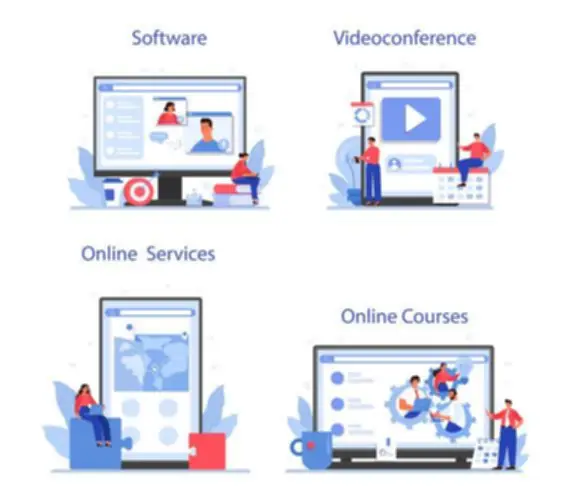Furthermore, developers are liable for implementing any changes that the software would possibly want after deployment. During the testing stage, developers will go over their software program system lifecycle with a fine-tooth comb, noting any bugs or defects that have to be tracked, fixed, and later retested. The evaluation stage contains gathering all the specific details required for a brand new system in addition to figuring out the first concepts for prototypes. It is necessary that you’ve contingencies in place when the product is first launched to market should any unforeseen issues arise. Microservices architecture, for example, makes it easy to toggle options on and off. A canary release (to a restricted variety of users) may be utilized if essential.
The System Improvement Life Cycle: Multiple-choice Questions
Completely defined in 1971, the term originated within the Data as a Product 1960s when mainframe computer systems stuffed whole rooms and a urgent need developed to define processes and gear centered on constructing massive business methods. In those days, groups have been small, centralized, and users have been ‘less’ demanding. This kind of state of affairs meant that there was not a real need for refined methodologies to drive the life cycle of system development.
- The system life cycle is outlined as collection of the phases of improvement through which a computer-based system passes.
- It offers a structured method to software improvement, making certain that the top product is of prime quality, inside the price range and delivered on time.
- Planning is also a time to identify any unrealistic goals that ought to be put aside.
- As users’ expectations and necessities evolve, the software should evolve accordingly to meet those altering demands.
- One of the most crucial pieces to suppose about during this stage is how the new asset fares within the general ecosystem of the bigger organization.
Phases Of Asset Lifecycle Management
The difference with the Agile strategy in software program is the focus on customer satisfaction all through the whole lifespan of a system. The waterfall approach means each section must be completed before the next part can start. As such, the transfer is finished during off-peak hours, to ensure a minimal impression on enterprise operations. Both professionals and end-users should have the ability to reap the advantages of the model new system during this section.
Advantages Of Software Development Life Cycle
For example, if the applying has a GUI, teams should sketch what that interface appears like in this stage. Teams must also consider whether or not customers must register accounts to make use of the app and, if so, whether there are several types of accounts, similar to admin and nonprivileged accounts, for different users. The objective of this stage is to develop a fundamental plan about what an application needs to do primarily based on business requirements. The iterative lifecycle model starts with the implementation of a small set of new software program necessities, and iteratively improves the evolving variations until the new system is fully carried out.
Object-oriented Evaluation And Design
These industries include manufacturing, oil and gas production, power generation, construction and transportation. The objective of asset lifecycle administration must be to maximize the efficiency of a model new bodily or digital asset by monitoring it for problems and performing preventive upkeep. Enterprise asset administration systems, or EAMs, have fast turn into the popular and handiest way of undertaking this. Ongoing enhancement and meticulous refactoring are the architects of this evolutionary process.

Each of them requires completely different specialists and various abilities for successful project completion. Modern SDLC processes have turn into increasingly complicated and interdisciplinary. After training, systems engineers and builders transition the system to its manufacturing setting. In methods design, capabilities and operations are described intimately, together with display layouts, business guidelines, course of diagrams, and other documentation. Modular design reduces complexity and allows the outputs to explain the system as a group of subsystems.
QA experts are also concerned within the dialogue, meaning that they will set their very own necessities and, if essential, adjust the process. Depending on the chosen development model, approaches to figuring out the moment of transition from one stage to a different might differ. For example, in the cascade or V-model, the system evaluation and requirements section are fastened within the SRS doc, the design of which should be accomplished before moving to the subsequent stage. The design stage draws on technical specs for the app that teams established during the evaluation stage. In fact, some descriptions of the stages of the SDLC treat analysis and design as a single section. However, as a outcome of evaluation focuses more on technical necessities, while design focuses on UX, developers should separate these processes into two phases.
This doc shapes the strict regulations for the project and specifies the exact software program model you’ll eventually implement. This includes the first system prototype drafts, market analysis, and an evaluation of rivals. It acts as the inspiration of the whole SDLC scheme and paves the way in which for the successful execution of upcoming steps and, ultimately, a profitable project launch. Once a system has been stabilized via testing, SDLC ensures that correct coaching is ready and carried out earlier than transitioning the system to assist workers and end customers.

It takes them days or even weeks to journey to a location to access the financial institution companies. This may involve training users, deploying hardware, and loading information from the prior system. Discover how Sund & Bælt uses IBM’s Maximo software to monitor and handle its crucial infrastructures.
Ben Janse is a young professional working at ToolsHero as Content Manager. He can be an International Business pupil at Rotterdam Business School the place he focusses on analyzing and creating management fashions. Thanks to his theoretical and practical data, he knows how to distinguish main- and aspect points and to make the essence of every article clearly visible. These can be solved through the upkeep part when the entire system is refined to enhance efficiency, or to fulfill new necessities. Sometimes employees will want extra coaching to fulfill this aim, new procedures have to be put in place, or updates should be made.
Systems Analysis & Design (SAD) is a process during which particular information methods are developed that effectively help hardware, software program, or people. The V-model (which is brief for verification and validation) is quite just like the waterfall mannequin. A testing section is integrated into every growth stage to catch potential bugs and defects. It’s advantageous for big initiatives since growth groups can create very custom-made products and incorporate any acquired suggestions relatively early within the life cycle.
In current years, the Agile software development mannequin has also become very popular. This mannequin prioritizes collaboration and communication amongst project team members, which enables them to stay aligned concerning project expectations and necessities. It additionally enables teams to assume about and implement adjustments based mostly on common suggestions without significantly impacting the project’s schedule, scope or finances. In addition, this model accounts for shifting project requirements, which could not at all times be obvious initially of the SDLC however emerge as it progresses. Ultimately, any development team in both the IT and different industries can profit from implementing system development life cycles into their projects. Use the above information to determine which methodology you need to use in conjunction with your SDLC for one of the best outcomes.
Depending on the selected software improvement model, they can change, undergo cycles, or be versatile. In the past, the most well-liked growth model was the Waterfall mannequin, which entailed pushing out modifications to functions in large, rare iterations. Today, Waterfall has largely given method to Agile software program improvement, which encourages teams to interrupt utility updates into small chunks of work and manage them utilizing quick sprints. Agile is usually more efficient for builders as a result of it lets them set small, manageable targets. It also can benefit customers, who obtain updates on a more common basis and do not have to contend with huge application overhauls that hit them all at once. Teams can implement the seven stages of the SDLC utilizing a selection of totally different software development models – meaning design strategies that information implementation and organize every set of changes to the application.
Some members do not wish to spend time writing, leading to the additional time wanted to complete a project. Documentation reduces the dangers of dropping personnel, easier to add folks to the project. Too much time spent attending meetings, in search of approval, etc. which result in extra value and time to the schedule. Find out every thing you want to know in regards to the Agile Software Development cycle with our complete information for CTOs. However, for this text, we are going to solely focus on the generally-accepted seven phases.
Transform Your Business With AI Software Development Solutions https://www.globalcloudteam.com/ — be successful, be the first!